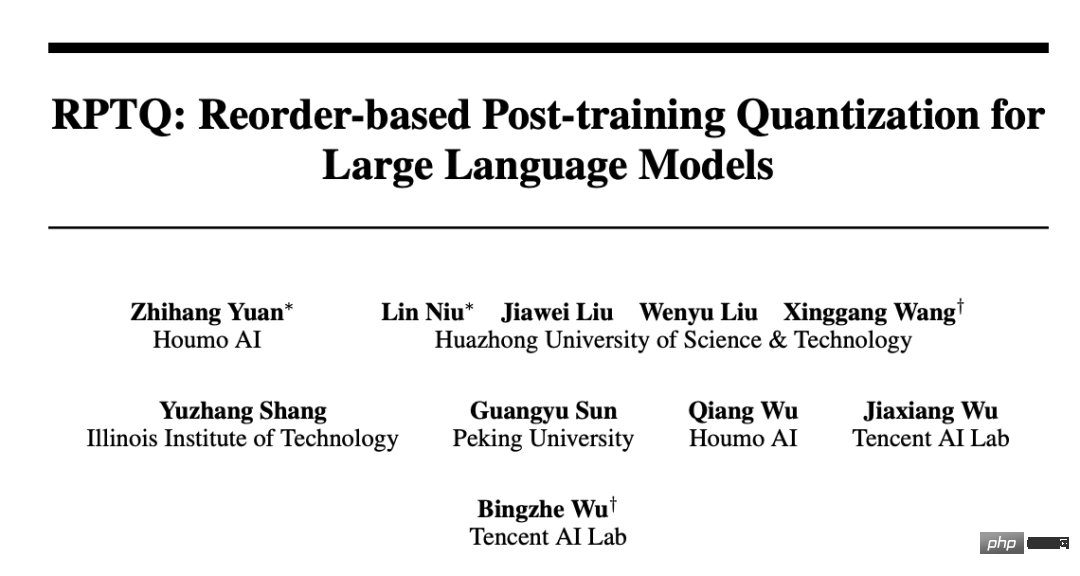Sorting in Perl can be done using the predefined function "sort"; this function sorts the array passed to it using the quicksort algorithm. The following article will introduce to you how to use the sort() function to sort arrays containing mixed-form strings (i.e. alphanumeric strings) in various ways. I hope it will be helpful to you. [Video tutorial recommendation: Perl tutorial]

Method 1: sort() substr() function
In order to compare strings using numbers, it is very important to get the number from the string. We can sort the string array based on these numbers.
The substr() function can be used to extract these numbers from a string. This function takes as argument the number of characters in the string excluding numbers.
Note: All alphanumeric strings in the array must be the same size.
Example:
use strict;
use 5.010;
# 用字母数字字符串定义数组值
my @x = qw(prin_4 Keys_8 pubg_12);
print "原数组:\n";
print join " , ", @x;
# 使用sort()和substr()函数对数组进行排序
my @y = sort { substr($a, 5) <=> substr($b, 5) } @x;
# 输出排序的数组
print "\n\n排序的数组:\n";
print join " , ", @y;Output:
原数组: prin_4 , Keys_8 , pubg_12 排序的数组: prin_4 , Keys_8 , pubg_12
Method 2: sort() Regular expression
If the alphanumeric string is a bit complex, executing the above code is a difficult job, so to make it simpler, we can use regular expressions.
For example: If the array contains "Keys_8_keys", then it is difficult to handle this case, so in order to filter the numbers in the string correctly, you can use regular expressions.
Note: This method does not care if the alphanumeric strings are of different sizes.
Example:
use strict;
use 5.010;
# Sample string to extract
# number from
my $str = 'Key_8_key';
# Regular expression to extract the number
my ($number) = $str =~ /(\d+)/;
# 输出提取的数字
print "从Key_8_key中提取的数字是:$number\n";
# 用字母数字字符串定义数组
my @x = qw(pri_4 Key_8_key pubg_12);
# 排序前的数组
print "\n排序前的数组:\n";
print join " , ", sort @x;
# 使用正则表达式
my @y = sort { ($a =~ /(\d+)/)[0] <=> ($b =~ /(\d+)/)[0] } @x;
# 排序后数组
print "\n\n排序后数组\n";
print join " , ", @y;Output:
从Key_8_key中提取的数字是:8 排序前的数组: Key_8_key , pri_4 , pubg_12 排序后数组 pri_4 , Key_8_key , pubg_12
Note: If the array contains strings where some of the strings do not have numbers in them, you can use 0 replaces this number. To check if there are no numbers in the string, use the following code:
my @y = sort { (($a =~ /(\d+)/)[0] || 0) (($b =~ /(\d+)/)[0] || 0) } @x;Example:
#!/usr/bin/perl
use strict;
use 5.010;
# 混合类型字符串的数组
my @x = qw(pri_4 Key pubg_12);
# 使用正则表达式
my @y = sort { (($a =~ /(\d+)/)[0] || 0) <=>
(($b =~ /(\d+)/)[0] || 0) } @x;
# 输出排序的数组
print "排序后数组:\n";
print join " , ", @y;Output:
排序后数组: Key , pri_4 , pubg_12
The above is the entire content of this article, I hope it can It will be helpful to everyone’s study. For more exciting content, you can pay attention to the relevant tutorial columns of the PHP Chinese website! ! !
The above is the detailed content of How to sort mixed strings in Perl? (code example). For more information, please follow other related articles on the PHP Chinese website!
 如何优化Java集合排序性能Jun 30, 2023 am 10:43 AM
如何优化Java集合排序性能Jun 30, 2023 am 10:43 AMJava是一种功能强大的编程语言,广泛应用于各类软件开发中。在Java开发中,经常会涉及到对集合进行排序的场景。然而,如果不对集合排序进行性能优化,可能会导致程序的执行效率下降。本文将探讨如何优化Java集合排序的性能。一、选择合适的集合类在Java中,有多种集合类可以用来进行排序,如ArrayList、LinkedList、TreeSet等。不同的集合类在
 如何利用vue和Element-plus实现数据的分组和排序Jul 18, 2023 am 10:39 AM
如何利用vue和Element-plus实现数据的分组和排序Jul 18, 2023 am 10:39 AM如何利用Vue和ElementPlus实现数据的分组和排序Vue是一种流行的JavaScript框架,它可以帮助我们构建前端应用程序。ElementPlus是基于Vue的桌面端组件库,它提供了丰富的UI组件,使我们能够轻松地构建出漂亮且用户友好的界面。在本文中,我们将探讨如何利用Vue和ElementPlus来实现数据的分组和排序。首先,我们需要准备一
 Java开发中如何优化集合排序去重性能Jul 02, 2023 am 11:25 AM
Java开发中如何优化集合排序去重性能Jul 02, 2023 am 11:25 AMJava开发中,集合排序和去重是常见的需求。然而,在处理大数据集合时,性能往往会成为一个问题。本文将介绍一些优化技巧,帮助提升集合排序和去重的性能。一、使用合适的数据结构在Java中,最常用的数据结构是ArrayList和HashSet。ArrayList适用于需要保持元素顺序的情况,而HashSet则适用于需要去重的情况。在排序和去重的场景中,我们可以使用
 使用Vue.js和Perl语言开发高效的网络爬虫和数据抓取工具Jul 31, 2023 pm 06:43 PM
使用Vue.js和Perl语言开发高效的网络爬虫和数据抓取工具Jul 31, 2023 pm 06:43 PM使用Vue.js和Perl语言开发高效的网络爬虫和数据抓取工具近年来,随着互联网的迅猛发展和数据的日益重要,网络爬虫和数据抓取工具的需求也越来越大。在这个背景下,结合Vue.js和Perl语言开发高效的网络爬虫和数据抓取工具是一种不错的选择。本文将介绍如何使用Vue.js和Perl语言开发这样一个工具,并附上相应的代码示例。一、Vue.js和Perl语言的介
 Java实现的常见排序算法详解Jun 18, 2023 am 10:48 AM
Java实现的常见排序算法详解Jun 18, 2023 am 10:48 AM排序算法是计算机科学中的一个重要概念,是许多应用程序的核心部分。在日常生活和工作中,我们经常需要对数据进行排序,例如排列名单、对数值进行排序等。Java作为一种广泛使用的编程语言,提供了许多内置的排序算法。本文将详细介绍Java中实现的常见排序算法。1.冒泡排序(BubbleSort)冒泡排序是最简单但最慢的排序算法之一。它遍历整个数组,比较相邻的元素并一
 如何在Java 14中使用Records类来实现自动比较和排序Jul 30, 2023 pm 01:06 PM
如何在Java 14中使用Records类来实现自动比较和排序Jul 30, 2023 pm 01:06 PM如何在Java14中使用Records类来实现自动比较和排序Java14引入了一种新的类称为Records类,它为我们提供了一种简洁而强大的方式来定义不可变的数据类。Records类具有自动为每个字段生成getter方法、equals()方法和hashCode()方法的特性,这使得比较和排序非常方便。在这篇文章中,我们将通过示例代码来演示如何在Java
 PHP usort() 函数使用指南:排序数组Jun 27, 2023 pm 02:27 PM
PHP usort() 函数使用指南:排序数组Jun 27, 2023 pm 02:27 PMPHPusort()函数使用指南:排序数组在PHP编程中,我们经常需要对数组进行排序。PHP提供了很多函数用于数组的排序,其中usort()函数可以灵活的对数组进行自定义排序。本文将介绍usort()函数的使用方法和注意事项,并通过实例演示如何使用usort()函数对数组进行排序。一、usort()函数简介PHPusort()函数
 基于重排序的新量化方法RPTQ:实现大型语言模型的 3 比特量化Apr 10, 2023 pm 02:21 PM
基于重排序的新量化方法RPTQ:实现大型语言模型的 3 比特量化Apr 10, 2023 pm 02:21 PM大型语言模型(LLMs)在各种任务上表现出色,但由于其庞大的模型规模,部署方面存在挑战。在这篇论文中,来自后摩智能、腾讯 AI Lab、华中科技大学、北京大学、伊利诺伊理工学院的研究人员发现量化大型语言模型的主要挑战来自于通道之间不同的激活范围,而不仅仅是离群值问题。作者提出了一种新颖的基于重排序的量化方法 RPTQ,解决了量化大型语言模型激活的问题。RPTQ 通过重新排列激活中的通道,然后将它们分簇进行量化,从而降低通道范围差异的影响。此外,作者通过避免显式重新排序来减少存储和计算开销。该工作


Hot AI Tools

Undresser.AI Undress
AI-powered app for creating realistic nude photos

AI Clothes Remover
Online AI tool for removing clothes from photos.

Undress AI Tool
Undress images for free

Clothoff.io
AI clothes remover

AI Hentai Generator
Generate AI Hentai for free.

Hot Article

Hot Tools

ZendStudio 13.5.1 Mac
Powerful PHP integrated development environment

MinGW - Minimalist GNU for Windows
This project is in the process of being migrated to osdn.net/projects/mingw, you can continue to follow us there. MinGW: A native Windows port of the GNU Compiler Collection (GCC), freely distributable import libraries and header files for building native Windows applications; includes extensions to the MSVC runtime to support C99 functionality. All MinGW software can run on 64-bit Windows platforms.

Notepad++7.3.1
Easy-to-use and free code editor

VSCode Windows 64-bit Download
A free and powerful IDE editor launched by Microsoft

SAP NetWeaver Server Adapter for Eclipse
Integrate Eclipse with SAP NetWeaver application server.





